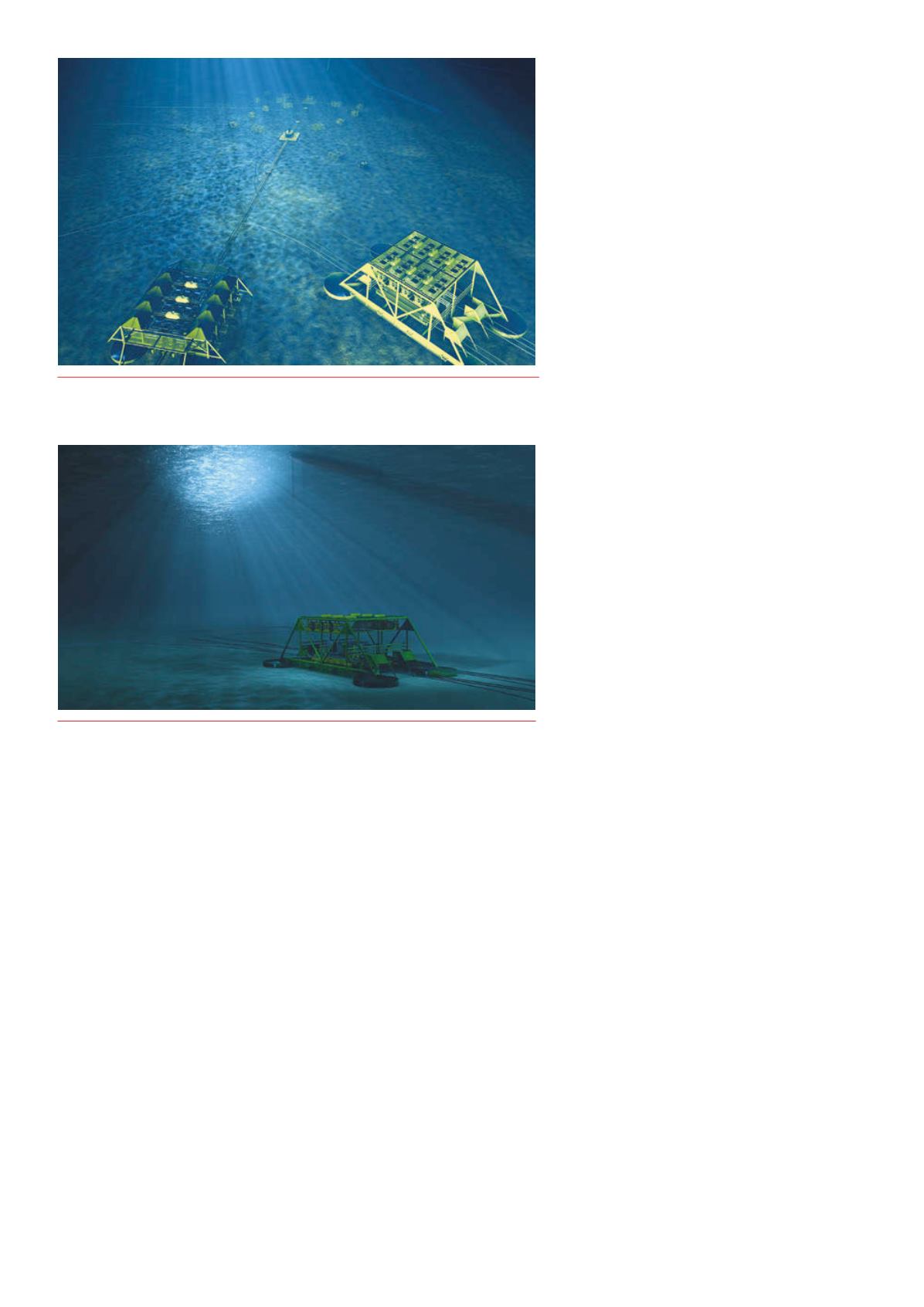
24 |
Oilfield Technology
June
2015
in order to be seen as an attractive solution in the future. Subsea
processing alternatives will be held up against other concepts
(traditional SPS, topside solutions) when evaluating the most
profitable business case for a development.
Simply put, the benefits of investing in subsea processing can be
explained through two cases:
Ì
Ì
Case 1: Carry out a brownfield implementation and delay the
capex related to subsea processing equipment until it is required,
in order to continue production from the field. The upside is
increased recovery and delayed capex.
Ì
Ì
Case 2: Carry out a greenfield implementation and reduce opex
by shortening the expected lifetime of the field.
These alternatives will be held up against other field
development concepts and the challenge is to create confidence
in the estimated increased recovery as well as the costs related to
investment and operation, to build plausible business cases.
Subsea pumping is becoming more commonplace and the
world’s first subsea compression systems will come on‑stream this
year. Developing these systems has been costly and time‑consuming.
Looking ahead, more efficient project execution can be expected
now that the industry has these experiences onboard, also aided by
standardisation efforts and re‑use of qualified technology.
Seabedsolution
The subsea sector is reportedly set to grow
significantly, going forward. According to recent
outlook reports, within 20 years, subsea production
will be on a par with traditional oil and gas production
offshore. Looking even further ahead, it is anticipated
that subsea will surpass traditional platforms in terms
of production.
Subsea developments have been made possible by
technologies such as flexibles, multiphase flow, subsea
trees and umbilicals. Subsea processing, however, has
had a slower implementation than earlier forecasts.
Its development, however, will have the potential
to remodel offshore developments globally through
subsea separation, re‑injection and boosting.
Investment and innovation in subsea processing
will be driven by the cost‑efficiencies it delivers.
Today, subsea processing has mainly been used
for increasing production in mature and marginal
fields. In the future, the experiences gained in this
area can be used to take this technology into harsh
environments where processing equipment located
on the surface might be at risk.
Standardsbenefit technology
Within the subsea market, it has typically been the
case that suppliers have responded to the needs
of the customer. At the same time, innovation and
standardisation have a long tradition of being
developed as collaborative efforts by industry players,
as the volume and maturity of the market segment has
grown. The standards developed are often adapted
by the authorities to form part of a regulatory regime,
where the customer/end user is ultimately held
responsible for adhering to these regulations in the
operation of the supplied technology.
Subsea is, by its nature, a conservative market.
Subsea technology, once installed, does not have the
benefit or option of easy adjustments, due to access
being relatively demanding and expensive. This in turn
drives the requirements for thorough qualification and robustness
of such facilities. Traditionally, each operating company has collated
its experiences and best practices into company specific technical
requirements. Facing the supply chain, where each operating
company interfaces with various contractors, who again interface
with various sub‑suppliers, the number of requirements down the
supplier hierarchy becomes relatively complex, and with it the
manufacturing and quality cost grow.
DNV GL is a firm believer that ingenious standardisation will
provide predictability in the supply chain, with respect to design,
manufacture and operation of technology. This predictability
through such standardisation still allows for flexibility to create
bespoke facilities at a system level through configuration of
standard building blocks or modules at a lower level. Standardising
at the right level will allow suppliers to optimise their processes and
products and promote efficiency in cost and quality.
A study published on standardisation by DIN German Institute
(Economic benefits of standardisation, DIN German Institute for
Standardization e. V.) discovered that there are inherent additional
benefits from standardisation with regards to cost reduction and the
competitive status of companies that participate in such activities
at an early stage. The opportunity to influence the content of the
Figure 2.
The oil andgas industry’s drive to developmore cost-efficient ways to produce,
process and transport oil andgas offshore has in recent years led to tremendous technology
developments on subsea technology.
Figure 3.
Subsea is, by its nature, a conservativemarket. Subsea technology, once
installed, does not have the benefit or option of easy adjustments, due to access being
relatively demandingand expensive. This in turndrives the requirements for thorough
qualificationand robustness of such facilities.


